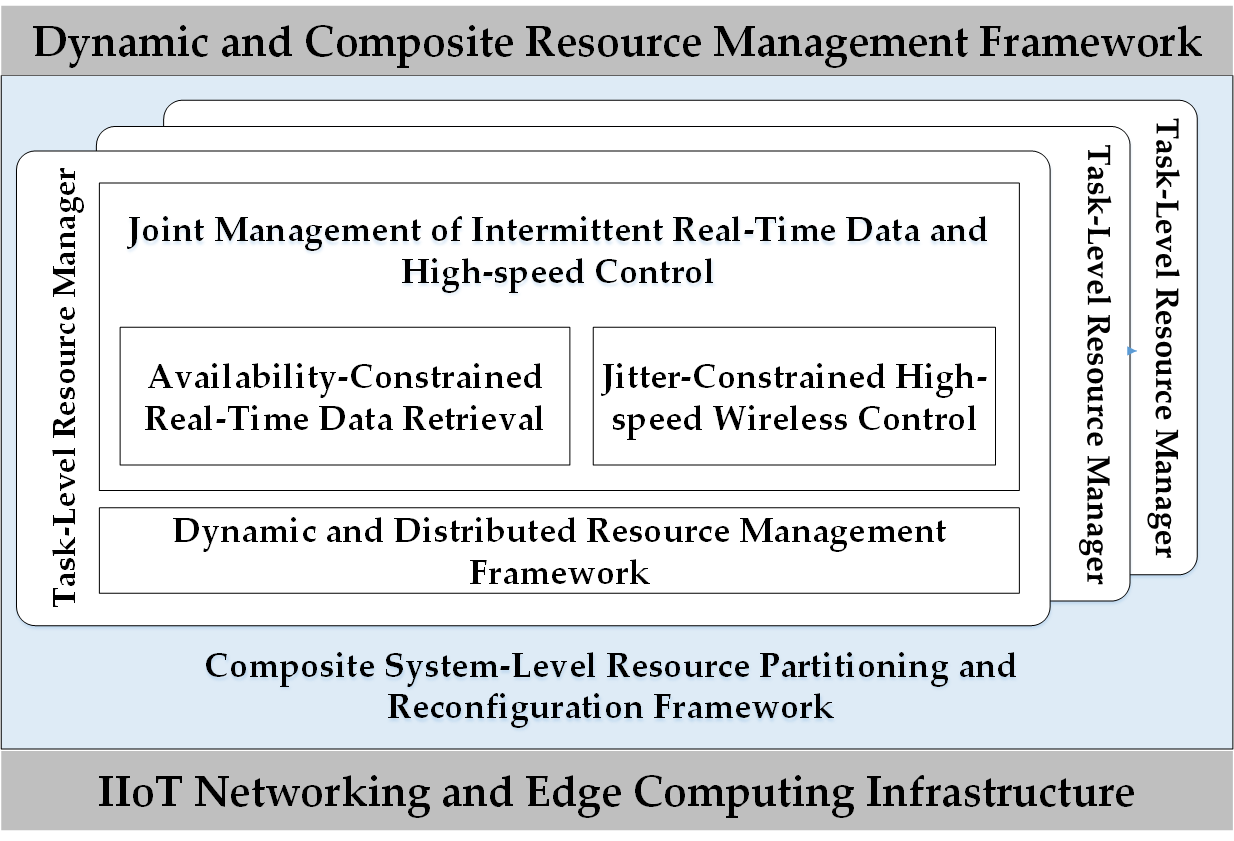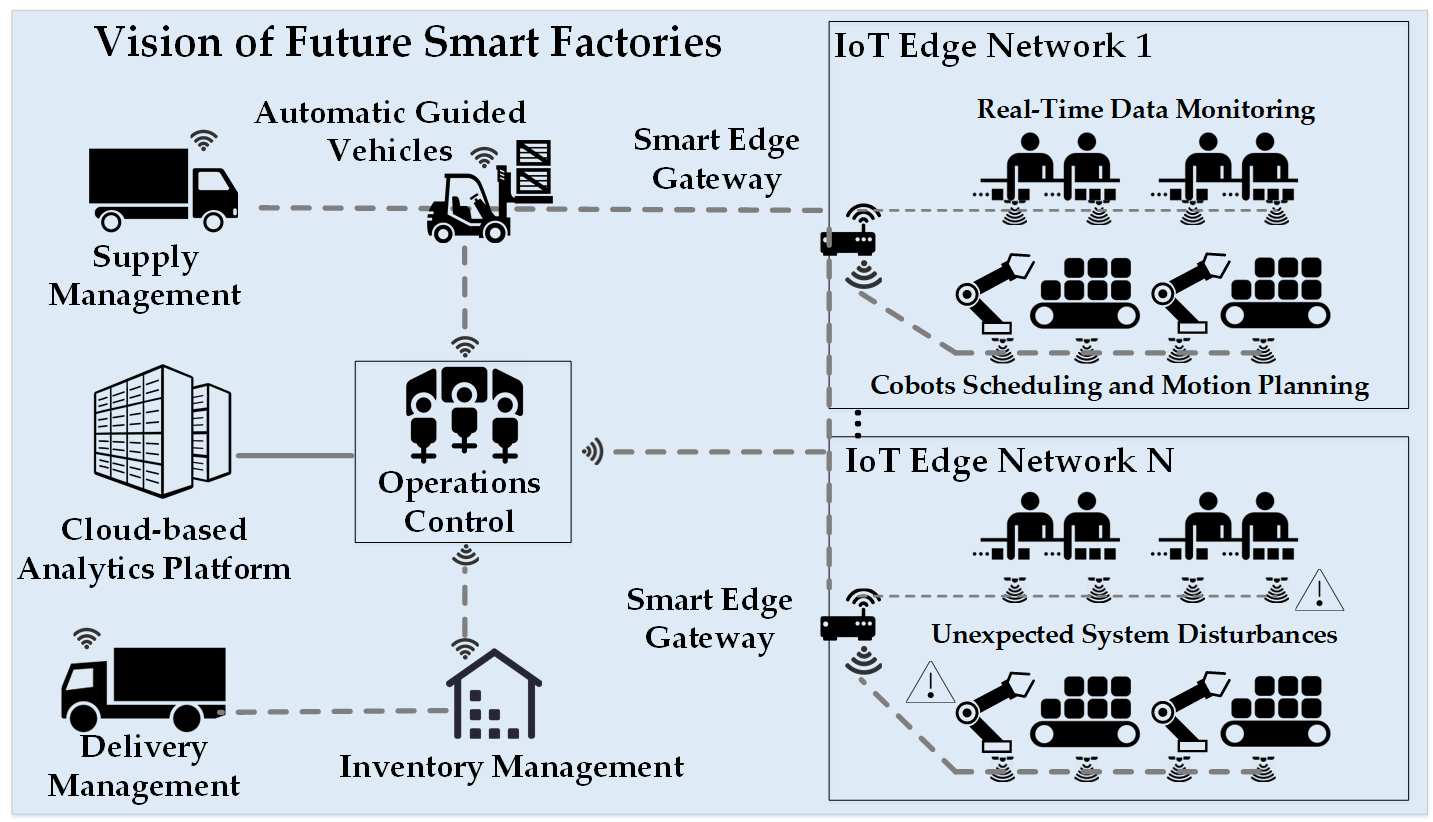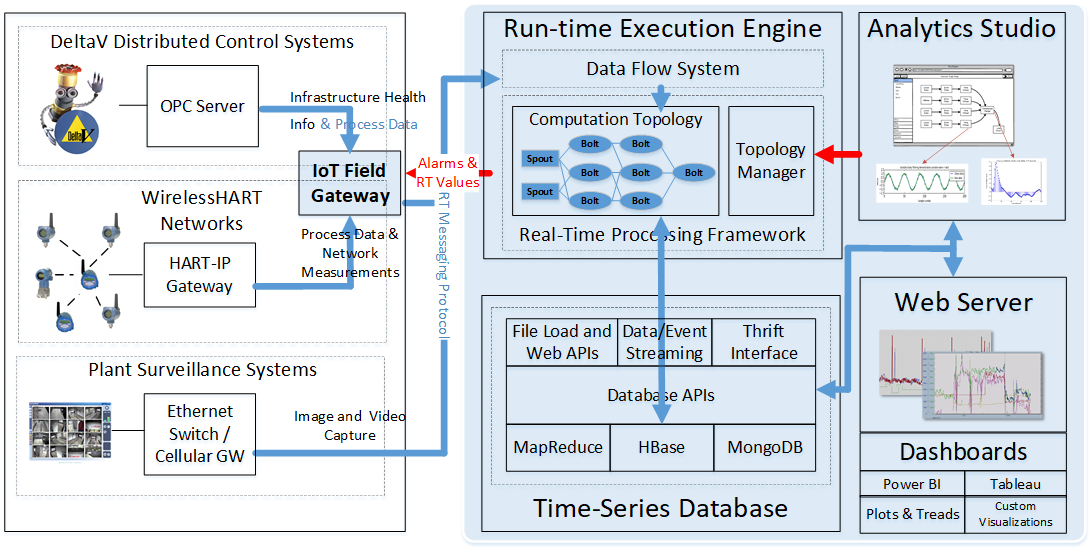Dynamic and Composite Resource Management in Large-scale IIoT Systems
Project Description: This project aims to fundamentally transform the design principles of resource management in large-scale industrial IoT (IIoT) systems. It will (i) design novel algorithms for real-time data management in IIoT systems with intermittent data sources; (ii) develop new scheduling techniques for control performance optimization in multi-cluster wireless networks; (iii) design a fully distributed packet scheduling framework to handle unexpected system disturbances in complex industrial environments; and (iv) explore new models and scheduling methods to develop a composite resource management framework for handling heterogeneous resource scheduling, partitioning and reconfiguration for time-critical end-to-end services in large-scale IIoT systems.
Funding Source: National Science Foundation (NSF)

Resilient Extraterrestrial Habitats
Project Description: This project aims to develop smart autonomous deep space habitats that will adapt, absorb and rapidly recover from disruptions. It has three research thrusts: the system resilience thrust will develop the techniques needed to establish a control-theoretic paradigm for resilience, and the computational capabilities needed to capture complex behaviors; the situational awareness thrust will develop and validate generic, robust, and scalable methods for detection and diagnosis of anticipated and unanticipated faults; the robotic maintenance thrust will develop and demonstrate the technologies needed to realize teams of independent autonomous robots that navigate through dynamic environments, and perform tasks using deployable modular hardware.
Participating Institutions: Purdue University (Lead), UConn, Harvard University, UT San Antonio
Funding Source: National Aeronautics and Space Administration (NASA)

IoT-enabled and AI-controlled Cobots for Connected, Reconfigurable and Resilient Manufacturing
Project Description: This project explores the potential of distributed autonomy, AI and collaborative robotics for improving efficiency, reducing uncertainty and human error and managing complexity in manufacturing systems. It aims to (i) facilitate edge computing in the manufacturing system such that a significant portion of computing is dedicated to the local subsystems which operate in a distributed yet cooperative manner; and (ii) utilize tools of distributed optimization for scheduling and motion-planning of cobots in a highly complex and dynamic environment, for improving the overall productivity and efficiency.
Funding Source: Air Force Research Lab (AFRL)

Software‐defined Wireless Network Research Infrastructure for IIoT Research
Project Description: This project aims to design an innovative software-defined IIoT infrastructure to serve as a unified testbed for a broad range of CISE researchers. The proposed infrastructure will (i) combines software-defined networking (SDN) backbone and software-defined radio (SDR)-based real-time wireless edge networks into a hybrid communication fabric to emulate a variety of industrial networking environments; (ii) provides a hierarchical real-time computing platform for real-time IIoT system monitoring, analysis and decision making; and (iii) organizes the edge computing facilities deployed at individual sites into a multi-site IIoT Blockchain network to support research on distributed data management technologies.
Participating Institutions: UConn (Lead), WPI, UT San Antonio
Funding Source: National Science Foundation (NSF)

Secure Communication Framework with Verifiable Authenticity in IIoT Systems
Project Description: This project aims to design 1) efficient signature schemes to support verifiable authenticity, integrity, and uniformity for intra-plant two-way real-time wireless communications, and 2) hierarchical and scalable blockchain protocols to support inter-plant immutable services. The proposed solutions will be implemented and deployed on a unique IIoT-enabled advanced manufacturing system testbed for design validation and performance evaluation.
Participating Institutions: UConn (Lead) and UC Santa Cruz
Funding Source: National Science Foundation (NSF)

Real-Time Wireless Powered Communication Network
Project Description: This project aims to design, implement and evaluate the performance of RT-WPCN, a real-time wireless powered communication network (WPCN). RT-WPCN consists of three key building blocks: batteryless wireless powered user devices, beamforming-based hybrid access point (HAP) and TDMA-based data link layer protocol to support multi-hop packet transmissions and forwarding. RT-WPCN is expected to be able to significantly reduce the maintenance cost of battery replacement in real-time wireless networks and facilitate a large number of sensor deployment in extreme environments.
Funding Source: UConn Research Excellence Program

Real-Time Wireless Protocol Designs for Industrial Automation
Project Description: This project aims to design, develop and commercialize real-time wireless network protocols to support a wide range of industrial automation applications. Research outcomes of this project include but are not limited to (i) WirelessHART, the first international standard for wireless communication for the process industries, (ii) 6TiSCH, the wireless protocol that enables IPv6 over the TSCH mode of IEEE 802.15.4e, and (iii) RT-WiFi, a configurable high-speed real-time wireless protocol for factory automation. In addition to the wireless protocols, hardware modules, gateway and network manager software and testing tools have also been developed to provide full-blown wireless solutions for industrial automation.
Participating Institutions: UConn (Lead) and UT Austin
Funding Source: NSF, Emerson Automation Solutions, Texas Instruments

Multi-View Latent Class Discovery and Prediction
Project Description: Discovering latent subgroups in a sample is an important problem in many scientific disciplines. This project addresses the latent class discovery and prediction problem by deriving novel and efficient approaches, including multi-view co-clustering, multi-view subspace clustering, multi-objective optimization of co-training, and multi-modal deep learning methods. Parallel and distributed algorithms are being developed to implement and scale up these methods. A streamlined analytics platform is being constructed to maximize the utility of the proposed approaches in real-world applications.
Funding Source: National Science Foundation (NSF)

Dietary Behavior Monitoring and Assessment through Wearable Sensors
Project Description: Obesity is a major public health issue resulting from internal and external drivers of energy over-consumption. This project aims at designing a non-invasive wearable sensing system, along with a smartphone application, to collect real-time data measurements on eating behaviors. These data will help consumers, healthcare providers and researchers to identify behaviors that promote satiety and interventions to promote healthy behaviors and healthy weights.
Funding Source: Connecticut Convergence Institute

Real-Time Analytics Platform for Process Monitoring and Control
Project Description: This project aims to design a real-time data analytics platform, referred to as RT-DAP, to support large-scale continuous data analytics in process industries. RT-DAP consists of three key components: a distributed time-series database to accommodate heterogenous data and support fast and effective queries; an analytics studio for data and control flow design for complex analytics tasks; and an elastic and real-time processing framework to distribute complex analytics and decision making processes on parallel computing infrastructure. A prototype of RT-DAP is implemented on Microsoft Azure and its performance has been validated through extensive experiments.
Funding Source: Emerson Automation Solutions and Microsoft

Towards Quantitative Cybersecurity Risk Assessment in Transportation Infrastructure
Project Description: Along with the emergence of Intelligent Transportation Systems (ITS), cybersecurity risk management in transportation infrastructure becomes more challenging. This is mainly because it is a cyber-physical system where cyber systems and components are used to control physical systems and processes, and impact human individuals (motorists, riders, etc.) as well. This project aims to take a sequence of steps to design a systematic and quantitative framework for cybersecurity risk management in representative transportation infrastructures. It will enhance the transportation infrastructure durability by i) helping identify primary assets and attack goals in representative transportation system use case; ii) providing quantitative estimation on major attack trajectories; and iii) helping identify the consequences of assets being compromised and assess the impact of these consequences.
Funding Source: DOT Transportation Infrastructure Durability Center (TIDC)

SD2N: Software-Defined Urban Distribution Network for Smart Cities
Project Description: Urban areas, where more than 80% of US population lives and 80% of energy is consumed, are developing into smart, connected communities. At the heart of city infrastructures is the urban power distribution network, which supports various systems including government, safety, water, food, transportation, communication, and other functions vital to the lives and work of citizens. This project architects a novel Software-Defined Distribution Network (SD2N), a gigabit networking and computing platform to enable a sustainable and resilient electric power Internet for smart cities. SD2N will manage a vast number of smart grid devices, allow self-adaption, self-management and self-healing without costly hardware upgrades, and provide a sustainable, scalable and replicable smart city backbone infrastructure. The new architecture will illustrate how software-defined networking and distributed real-time computing can provide urban infrastructures with resilient, sustainable, human-centered, highly efficient and affordable service platforms for smart cities.
Funding Source: National Science Foundation (NSF) and UConn Academic Plan
